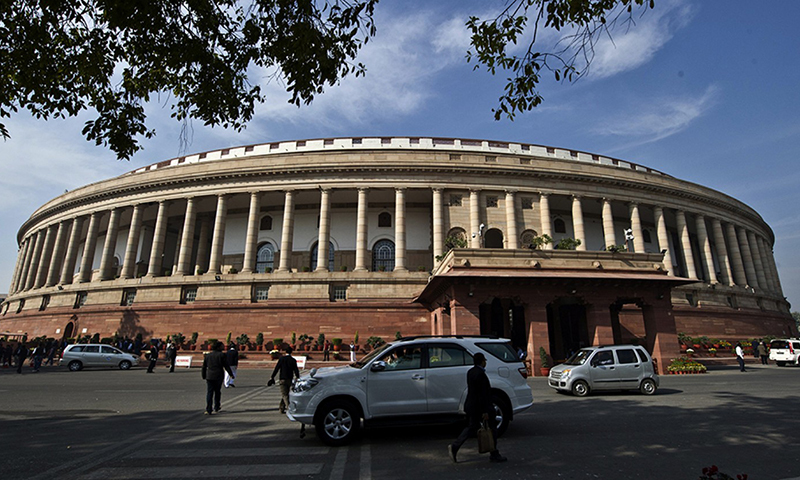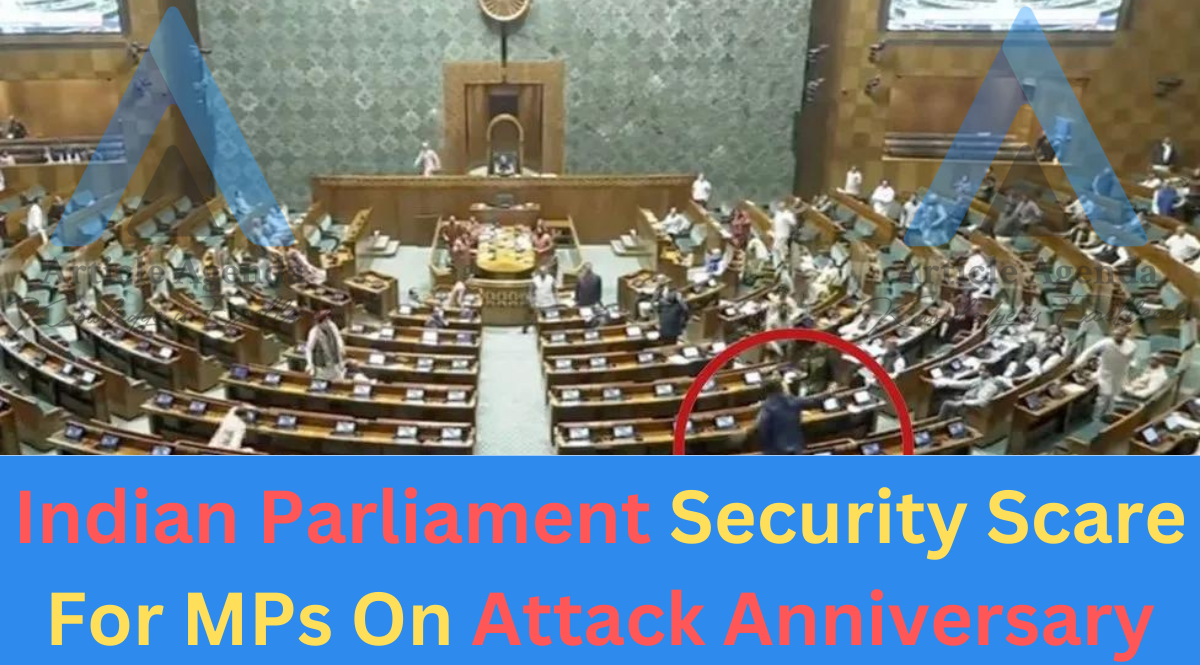Introduction
The Indian Parliament is the heart of democracy in the country, where elected representatives gather to debate and make decisions that shape the nation’s future. However, this sacred institution has not been immune to security threats. On the anniversary of a devastating attack on the Parliament building, a recent security scare has once again raised concerns about the safety of Members of Parliament (MPs). In this article, we will delve into the background of the attack anniversary, the importance of security for MPs, analyze the existing security measures, discuss recent incidents and their impact on security protocols, explore the challenges faced in ensuring parliament security, highlight initiatives taken to enhance security, examine the role of technology in parliament security, draw insights from international examples of parliament security, and conclude with a call to action.
Table of Contents
- Introduction
- Background on the Attack Anniversary
- Importance of Indian parliament Security for MPs
- Analysis of the Security Measures in Place
- Recent Incidents and Their Impact on Security Protocols
- Challenges Faced in Ensuring Parliament Security
- Initiatives Taken to Enhance Security
- Role of Technology in Parliament Security
- International Examples of Parliament Security
- Conclusion and Call to Action
Background on the Attack Anniversary
On December 13, 2001, the Indian Parliament was targeted by a terrorist attack that shook the nation to its core. A group of armed militants breached the security perimeter and launched a deadly assault, resulting in the loss of several lives. This brazen attack was a wake-up call for the country, highlighting the vulnerability of the Parliament building and the need for robust security measures. The attack anniversary serves as a painful reminder of the past and an opportunity to reflect on the progress made in securing the Parliament.
Read More : Examining COP28’s potential impact on climate change
Importance of Indian parliament Security for MPs
The safety and security of Members of Parliament are of paramount importance. MPs are responsible for representing the interests of their constituents, participating in debates, and making crucial decisions that impact the lives of millions. Any compromise in their security not only puts their lives at risk but also undermines the functioning of democracy. It is essential to create an environment where MPs can carry out their duties without fear or hindrance, ensuring that they can freely express their opinions and contribute to the democratic process.

Analysis of the Security Measures in Place
Significant efforts have been made to enhance the security of the Indian Parliament since the 2001 attack. The perimeter has been fortified with robust fencing and multiple layers of security checkpoints. Security personnel, equipped with state-of-the-art technology and extensive training, are deployed to maintain vigilance and respond swiftly to any potential threats. Advanced surveillance systems, including CCTV cameras and biometric access control, have been installed to monitor activities within the premises. The security measures also encompass strict protocols for entry and exit, with thorough identification and screening procedures for all individuals entering the Parliament building.
Recent Incidents and Their Impact on Security Protocols
Despite the existing security measures, recent incidents have highlighted the need for constant evaluation and adaptation of security protocols. In 2019, an unauthorized drone was spotted near the Indian Parliament, raising concerns about the potential use of unmanned aerial vehicles for malicious purposes. This incident prompted a reevaluation of the security measures and led to the implementation of additional countermeasures to mitigate the threat posed by drones. Furthermore, instances of unruly behavior and physical altercations within the Parliament premises have underlined the importance of maintaining discipline and order to ensure the safety of MPs and other personnel.
Challenges Faced in Ensuring Parliament Security
Securing the Indian Parliament is a complex task that involves addressing various challenges. One of the primary challenges is striking a balance between maintaining an open and accessible democratic institution and ensuring stringent security measures. The Parliament serves as a platform for public engagement, and it is crucial to uphold the principles of transparency and inclusivity. However, this openness also presents opportunities for potential security breaches. Additionally, the sheer size and historical significance of the Parliament building pose logistical challenges in implementing comprehensive security measures without disrupting its architectural integrity.

Initiatives Taken to Enhance Security
Efforts have been made to overcome the challenges in ensuring parliament security through a range of initiatives. The establishment of specialized security agencies, such as the Parliament Security Service, dedicated to safeguarding the Parliament building and its occupants, has proven instrumental in improving security preparedness. Regular security drills and training programs are conducted to enhance the capabilities of security personnel and ensure their readiness to handle any emergency. Collaboration with international security agencies and the sharing of best practices has also played a crucial role in strengthening security measures.
Role of Technology in Parliament Security
Technology has emerged as a vital tool in bolstering parliament security. The integration of advanced surveillance systems, biometric identification, and access control mechanisms has significantly enhanced the ability to monitor and control access to sensitive areas within the Parliament building. Artificial intelligence and data analytics are being leveraged to analyze patterns and detect anomalies, enabling proactive threat detection. The use of technology also extends to communication systems, allowing for seamless coordination between security personnel and enabling swift responses to any security incidents.
Read More : Support for Hamas grows among Palestinians in West Bank
International Examples of Parliament Security
India can draw valuable insights from international examples of parliament security. Several countries have implemented innovative security measures to safeguard their legislative buildings. For instance, the United Kingdom’s Houses of Parliament employ a combination of physical barriers, advanced surveillance systems, and armed police presence to protect the premises. Australia’s Parliament House features an intricate security system that includes multiple layers of access control and extensive use of CCTV cameras. By studying these international examples, India can learn from their experiences and adopt best practices to further enhance the security of its own Parliament.
Conclusion and Call to Action
The recent security scare at the Indian Parliament on the attack anniversary serves as a stark reminder of the constant threat faced by MPs and the importance of robust security measures. While significant progress has been made in securing the Parliament building, there is a need for continuous evaluation and adaptation to address emerging challenges. The security of MPs must be prioritized, ensuring they can fulfill their duties without fear or hindrance. The use of technology, collaboration with international partners, and the implementation of best practices are essential in further enhancing the security of the Indian Parliament. As citizens, we must support these efforts and advocate for a safe and secure environment for our elected representatives, thereby safeguarding the democratic process.
Call to Action: Let us join hands in advocating for enhanced security measures for the Indian Parliament. Together, we can ensure the safety and well-being of our elected representatives and uphold the principles of democracy. Contact your local representatives and voice your concerns about parliament security. Together, we can make a difference!
Latest Post : Sikkim Satellite Images Show Devastating The Himalayan Floods


daktilogibigibi.g6L2CuG3fAMB
daxktilogibigibi.VtNvRCm6Mk9e
gladioli xyandanxvurulmus.38DHCXXL1VCy
anal siteleri pompadirha.X3Z2SVX3OBno
am siteleri hephupx.cjV3OTOUODUw
porno siteleri bingoxx.3SyX8l0n4pkR
eski rahatiniz olmayacak 250tldenemebonusuxx.R3rqcq7Qq77X
anal siteleri eyeconartxx.wwAD58mKNIx1
house porn vvsetohimalxxvc.NO29Ho2a1pxB
porn in 4k download gghkyogg.64bvmKx9lEL
sex hd video download ggjennifegg.bX8UGmGUG72
hd porn download free ggjinnysflogg.Zn2WNhr7K62
qiyezp.com
Zhu Houzhao는 “이 시점에서 그가 죽으면 치료를 받아야 할 것”이라고 말했다.
sandyterrace.com
Fang Jifan은 조금 부끄러워서 그녀에게 엄지 손가락을 치켜 올릴 수밖에 없었습니다. “아무 말도 안 했어요, 좋은 가슴.”
Casino siteleri 2024 listesi ile en güvenilir canlı casino
sitelerine ulaşın.
Grandpashabet giriş adresi bağlantısına ulaşmak için sitemiz üzerinden güncel giriş butonuna tıklayabilirsiniz.
Casino siteleri
arasından en güvenilir canlı casino sitelerine ulaşmak için slot oynarken sitemizi tercih edin.
Deneme bonusu veren siteler listesi 2024 güncel haliyle deneme bonuslarına ulaşabilirsiniz.
微乳ポルノ .zEViN5GgqfW
I do not even understand how I ended up here, but I assumed this publish used to be great
Very interesting info!Perfect just what I was looking for!Raise blog range